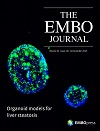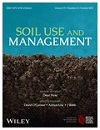Latest Publications
Interactions of long-term grazing and woody encroachment can shift soil biogeochemistry and microbiomes in savanna ecosystems
Ryan M. Mushinski, Yong Zhou, Ayumi Hyodo, Claudio Casola, Thomas W. Boutton
 We investigated the interactions between livestock grazing history (none, moderate, heavy) and vegetation cover (grassland, juniper, oak) using a ∼ 70-year grazing experiment in west-central Texas. We explored effects on soil organic carbon (SOC), total nitrogen (TN), total phosphorus (TP), microbial community composition, and function. The findings highlight how long-term livestock grazing and woody plant encroachment influence soil C, N, P cycles, altering soil microbial community structure and function. This study provides insights for savanna ecosystem management and integrating land cover effects into biogeochemical models for global change scenarios.
We investigated the interactions between livestock grazing history (none, moderate, heavy) and vegetation cover (grassland, juniper, oak) using a ∼ 70-year grazing experiment in west-central Texas. We explored effects on soil organic carbon (SOC), total nitrogen (TN), total phosphorus (TP), microbial community composition, and function. The findings highlight how long-term livestock grazing and woody plant encroachment influence soil C, N, P cycles, altering soil microbial community structure and function. This study provides insights for savanna ecosystem management and integrating land cover effects into biogeochemical models for global change scenarios.
Gary Bending publications
 Quantifying microplastic dispersion due to density effects
Quantifying microplastic dispersion due to density effects
Stride, Ben, Abolfathi, Soroush, Bending, Gary D. and Pearson, Jonathan M
An experimental study was conducted on how polymer density affects the transport and fate of microplastics in aquatic flows. For the first time, polypropylene (PP), polyethylene (PE), polymethyl methacrylate (PMMA), polyetheretherketone (PEEK), and polyvinyl chloride (PVC) were chemically stained and tested using solute transport techniques and velocities found among rivers in the natural environment (0.016 – 0.361 m/s). Except for PP, in most conditions microplastics exhibited similar transport characteristics to solutes regardless of density and established solute transport models were successfully implemented to predict their transport and fate.. This data is the first to provide microplastic suspension and deposition thresholds based on river velocity and polymer density, making a key contribution to research predicting microplastic fate and organismal exposure.
Journal of Hazardous Materials. January 2024
 Distinct biogeographic patterns in Glomeromycotinian and Mucoromycotinian arbuscular mycorrhizal fungi across China: A meta-analysis
Distinct biogeographic patterns in Glomeromycotinian and Mucoromycotinian arbuscular mycorrhizal fungi across China: A meta-analysis
Zihao Liu, Jie Fang, Yucheng He, Gary D Bending, Bin Song, Yaping Guo, Xiaojie Wang, Zemin Fang, Jonathan M Adams
Fine root endophytes, recently reclassified as Mucoromycotinian arbuscular mycorrhizal fungi (M-AMF), are now recognized as functionally important as Glomeromycotinian AMF (G-AMF). Here, we investigated the biogeographic assemblies and ecological diversity patterns of both G-AMF and M-AMF, using published 18S rDNA amplicon datasets and associated metadata from 575 soil samples in six ecosystems across China. This study provides solid evidence that the two AMF groups have distinct ecological preferences at the continental scale in China, and also highlights the potential impacts of anthropogenic activities on distributions of AMF. These results advance our knowledge of the ecological differences between the two fungal groups in terrestrial ecosystems, suggesting the need for further field-based investigation that may lead to a more sophisticated understanding of ecosystem function and sustainable management.
Long noncoding RNA-mediated epigenetic regulation of auxin-related genes controls shade avoidance syndrome in Arabidopsis
 María Florencia Mammarella, Leandro Lucero, Nosheen Hussain, Aitor Muñoz-Lopez, Ying Huang, Lucia Ferrero, Guadalupe L Fernandez-Milmanda, Pablo Manavella, Moussa Benhamed, Martin Crespi, Carlos L Ballare, Jose Gutierrez-Marcos, Pilar Cubas, Federico Ariel
María Florencia Mammarella, Leandro Lucero, Nosheen Hussain, Aitor Muñoz-Lopez, Ying Huang, Lucia Ferrero, Guadalupe L Fernandez-Milmanda, Pablo Manavella, Moussa Benhamed, Martin Crespi, Carlos L Ballare, Jose Gutierrez-Marcos, Pilar Cubas, Federico Ariel
The long noncoding RNA (lncRNA) AUXIN-REGULATED PROMOTER LOOP (APOLO) recognizes a subset of target loci across the Arabidopsis thaliana genome by forming RNA–DNA hybrids (R-loops) and modulating local three-dimensional chromatin conformation. Here, we show that APOLO regulates shade avoidance syndrome by dynamically modulating expression of key factors. We show that direct application of APOLO RNA to leaves results in a rapid increase in auxin signaling that is associated with changes in the plant response to far-red light. Collectively, our data support the view that lncRNAs coordinate shade avoidance syndrome in A. thaliana, and reveal their potential as exogenous bioactive molecules. Deploying exogenous RNAs that modulate plant–environment interactions may therefore become a new tool for sustainable agriculture.
George Bassel publications
 A quantitative morphospace of multicellular organ design in the plant Arabidopsis
A quantitative morphospace of multicellular organ design in the plant Arabidopsis
Salva Duran-Nebreda, Matthew D.B. Jackson, George W. Bassel
The investigation of cellular organization can provide insight into organ function following structure-function relationships. Here, we investigate the extent to which properties in cellular organization can arise ‘‘for free’’ as an emergent property of embedding cells in space versus those that are actively generated by patterning processes. A 3D cellular-resolution digital tissue atlas for the model plant species Arabidopsis was generated, and the extent to which the organs in this organism conform to the default configurations was established through statistical comparisons with digital tissue models. This work establishes a quantitative morphospace to understand the principles of organ construction and its diversity within a single organism.
Current Biology. November 2023
 Toward uncovering an operating system in plant organs
Toward uncovering an operating system in plant organs
Gwendolyn V Davis, Tatiana de Souza Moraes, Swanand Khanapurkar, Hannah Dromiack, Zaki Ahmad, Emmanuelle M Bayer, Rishikesh P Bhalerao, Sara I Walker, George W Bassel
Molecular motifs can explain information processing within single cells, while how assemblies of cells collectively achieve this remains less well understood. Plant fitness and survival depend upon robust and accurate decision-making in their decentralised multicellular organ systems. Mobile agents, including hormones, metabolites, and RNAs, have a central role in coordinating multicellular collective decision-making, yet mechanisms describing how cell-cell communication scales to organ-level transitions is poorly understood. Here, we explore how unified outputs may emerge in plant organs by distributed information processing across different scales and using different modalities. Mathematical and computational representations of these events are also explored toward understanding how these events take place and are leveraged to manipulate plant development in response to the environment.
The effect of organic matter amendments on soil surface stability in conventionally cultivated arable fields
 Jacqueline L. Stroud, Simon J. Kemp, Craig J. Sturrock
Jacqueline L. Stroud, Simon J. Kemp, Craig J. Sturrock
In this study, new and traditional organic wastes (green waste compost, farmyard manure (FYM), anaerobic digestate or straw) were ploughed into an arable field experiment at a range of rates (1–3 t C ha−1) and under spring and winter cropping rotations for 5 years. The stability of the soil surface structure (<5 cm) was assessed in Years 3, 4 and 5 to guide the use of organic wastes in arable field management. In conclusion, to achieve a stable soil surface structure, a 150% improvement in aggregate stability would be needed here and ploughing in organic wastes was not a successful management approach on these arable field experiments.
Mechanism of substrate binding and transport in BASS transporters
 Patrick Becker, Fiona B. Naughton, Deborah H. Brotherton, Raul Pacheco-Gomez, Oliver Beckstein, Alexander D. Cameron
Patrick Becker, Fiona B. Naughton, Deborah H. Brotherton, Raul Pacheco-Gomez, Oliver Beckstein, Alexander D. Cameron
The bile acid sodium symporter (BASS) family transports a wide array of molecules across membranes, including bile acids in humans, and small metabolites in plants. These transporters, many of which are sodium-coupled, have been shown to use an elevator mechanism of transport, but exactly how substrate binding is coupled to sodium ion binding and transport is not clear. Here, we solve the crystal structure at 2.3 Å of a transporter from Neisseria meningitidis (ASBTNM) in complex with pantoate, a potential substrate of ASBTNM.. Comparison of structures in the presence and absence of pantoate demonstrates that pantoate elicits a conformational change in one of the cross-over helices. This modifies the interface between the two domains that move relative to one another to elicit the elevator mechanism. These results have implications, not only for ASBTNM but for the BASS family as a whole and indeed other transporters that work through the elevator mechanism.
